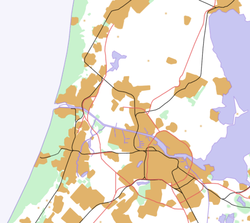 Johnny Jordaanplein | |
| Part of | Elandsgracht |
|---|---|
| Namesake | Johnny Jordaan |
| Type | Square |
| Owner | Amsterdam Municipality |
| Location | End of the Elandsgracht Amsterdam NL |
| Coordinates | 52°22′12″N4°52′56″E / 52.37°N 4.882222°E |
| Construction | |
| Completion | 1991 |
| Other | |
| Known for | Bust (sculpture)s |
The Johnny Jordaanplein, also known as Johnny Jordaan Square is a public square in the center of the Dutch city of Amsterdam which features outdoor sculptures. The square was named for musician Johnny Jordaan and it was dedicated in 1991.


